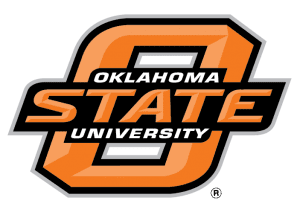OneNet’s 100G Ring Supports Research, Big Data Movement
As the demand for data movement for Oklahoma research organizations continues to grow, the Oklahoma State Regents for Higher Education (OSRHE) and OneNet recognize the need to support these initiatives. To meet this growing demand, OSRHE and OneNet completed a 100 gigabit-per-second (100Gbps) fiber ring in 2015, and today that ring supports a variety of research across the state.
OneNet’s 100Gbps ring connects Oklahoma State University in Stillwater, Oklahoma State University in Tulsa and the University of Oklahoma in Norman to OneNet in Oklahoma City and to Internet2’s nationwide 100Gbps research backbone network.
“The Oklahoma State Regents for Higher Education are committed to maintaining research as a priority in our state,” said Chancellor Glen D. Johnson. “The faster connections will allow our institutions to access the latest technology required to communicate and compete with other higher education institutions across the country and ensure our campuses have the tools needed to train tomorrow’s workforce.”
Meeting the needs of Oklahoma’s research community is a vital component of OSRHE and OneNet’s mission to advance technology across Oklahoma.
“Completion of this project is a giant step forward in providing leading technology for Oklahoma’s research communities,” said Vonley Royal, OneNet’s executive director. “This is just another example of how OSRHE and OneNet are staying ahead of the technological curve. “
 At Oklahoma State University, scientists are using the 100G network for cutting-edge life-science research.
At Oklahoma State University, scientists are using the 100G network for cutting-edge life-science research.
“Our largest user groups for the new network are our life scientists,” said Dana Brunson, Ph.D., director of OSU’s High Performance Computing Center. “The network supports the movement of bioinformatics sequence data from OSU’s supercomputer to the Pittsburgh Supercomputing Center. This research and analysis is vital to OSU’s contribution to genomic data initiatives.”
One nationwide organization that relies on the 100Gbps connection in Oklahoma is the National Oceanic and Atmospheric Administration (NOAA). In partnering with the University of Oklahoma (OU) and OU’s Cooperative Institute for Mesoscale Meteorological Studies (CIMMS), NOAA utilizes OneNet’s 100Gbps ring to improve severe weather forecasting through their Warn-on-Forecast research.
“We hope to design a system reliable enough to actually provide warnings based on a probabilistic forecasting system that provides us with sufficient confidence that the event will happen, the timeframe of its onset and its geographical location,” said Gerry Creager, CIMMS research associate. “This information will enable us to issue the warning more in advance.”
Even though NOAA is partnering with OU for this venture, the research efforts span several states and benefit the entire nation. Data is frequently passed from the University of Texas to OU and the NOAA offices in Boulder, Colorado and Fairmont, West Virginia.
“Our models will help the NOAA’s Storm Prediction Center provide better input to discussions held within the various National Weather Service offices affected by severe weather throughout the day,” Creager said.
As the nation continues to be affected by severe weather each year, NOAA’s research will play a vital role in improving dissemination of information to the public and response in the event of a severe weather outbreak.
 “Warn-on-Forecast has the potential to transform our ability to warn the public of dangerous weather by issuing warnings based not upon human observation, radar or other capabilities, but rather upon computer forecasts,” said Kelvin Droegemeier, OU’s vice president for research. “Notification lead time might increase, which means we need an even greater understanding of how people will respond if given additional time and guidance. Consequently, the Warn-on-Forecast research approach integrates social and behavioral scientists with meteorologists, mathematicians, technologists and engineers.”
“Warn-on-Forecast has the potential to transform our ability to warn the public of dangerous weather by issuing warnings based not upon human observation, radar or other capabilities, but rather upon computer forecasts,” said Kelvin Droegemeier, OU’s vice president for research. “Notification lead time might increase, which means we need an even greater understanding of how people will respond if given additional time and guidance. Consequently, the Warn-on-Forecast research approach integrates social and behavioral scientists with meteorologists, mathematicians, technologists and engineers.”
As big data movement needs continue to grow for research projects, OneNet is committed to deploying new technologies that will meet these expanding requirements.
“Providing this critical connectivity to support research like that conducted by NOAA is only one example of the State Regents’ and OneNet’s commitment to advance technology in Oklahoma,” Royal said. “We will continue to seek innovative avenues to deliver emerging technologies and build the most advanced network in our great state.”
